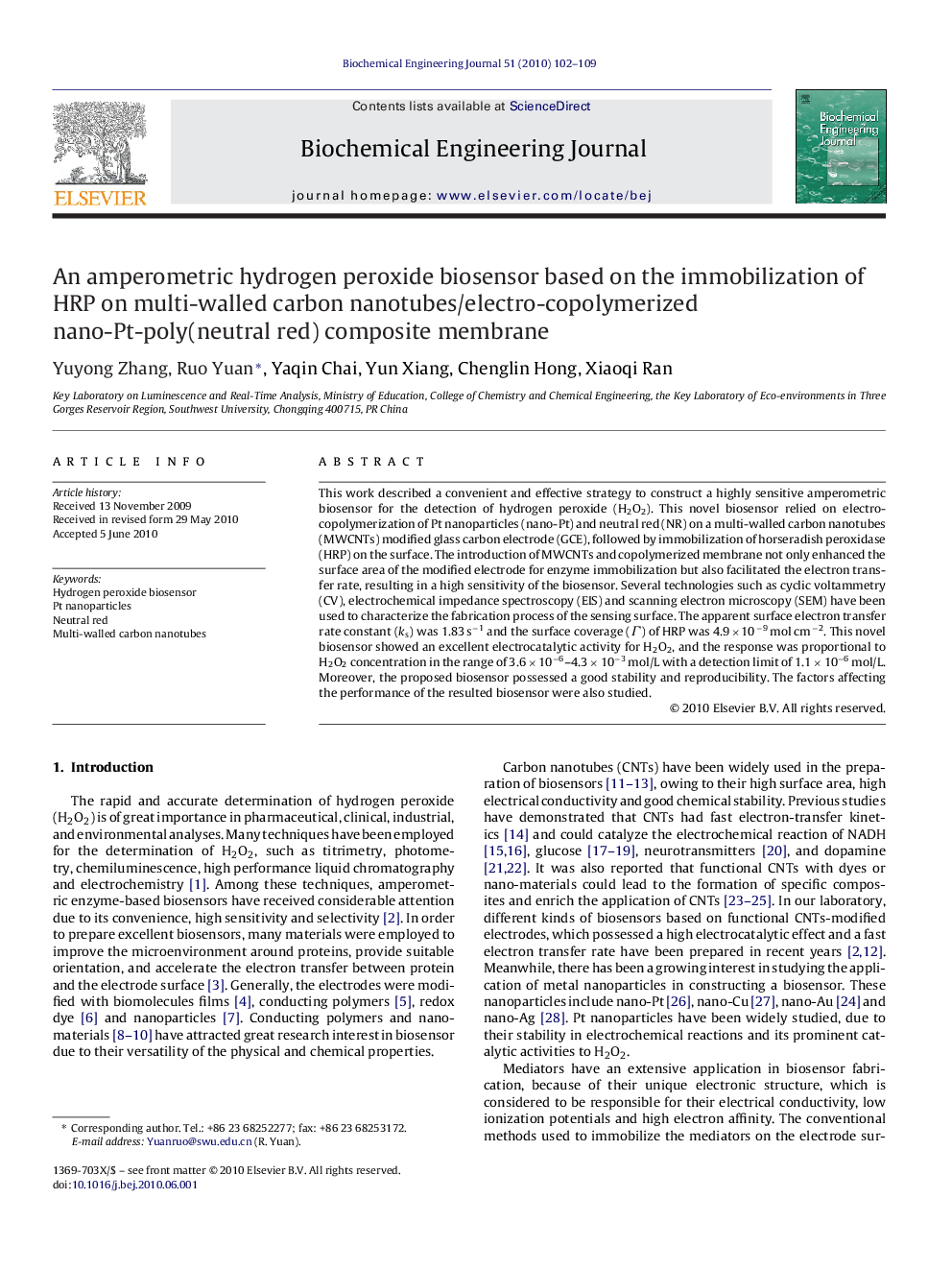| Article ID | Journal | Published Year | Pages | File Type |
|---|---|---|---|---|
| 3908 | Biochemical Engineering Journal | 2010 | 8 Pages |
This work described a convenient and effective strategy to construct a highly sensitive amperometric biosensor for the detection of hydrogen peroxide (H2O2). This novel biosensor relied on electro-copolymerization of Pt nanoparticles (nano-Pt) and neutral red (NR) on a multi-walled carbon nanotubes (MWCNTs) modified glass carbon electrode (GCE), followed by immobilization of horseradish peroxidase (HRP) on the surface. The introduction of MWCNTs and copolymerized membrane not only enhanced the surface area of the modified electrode for enzyme immobilization but also facilitated the electron transfer rate, resulting in a high sensitivity of the biosensor. Several technologies such as cyclic voltammetry (CV), electrochemical impedance spectroscopy (EIS) and scanning electron microscopy (SEM) have been used to characterize the fabrication process of the sensing surface. The apparent surface electron transfer rate constant (ks) was 1.83 s−1 and the surface coverage (Γ) of HRP was 4.9 ×10 −9 mol cm −2. This novel biosensor showed an excellent electrocatalytic activity for H2O2, and the response was proportional to H2O2 concentration in the range of 3.6 × 10−6–4.3 × 10−3 mol/L with a detection limit of 1.1 × 10−6 mol/L. Moreover, the proposed biosensor possessed a good stability and reproducibility. The factors affecting the performance of the resulted biosensor were also studied.
